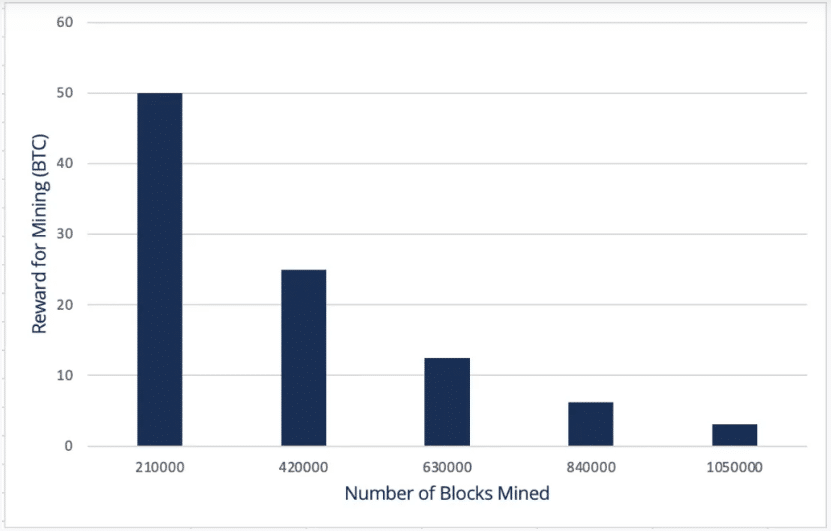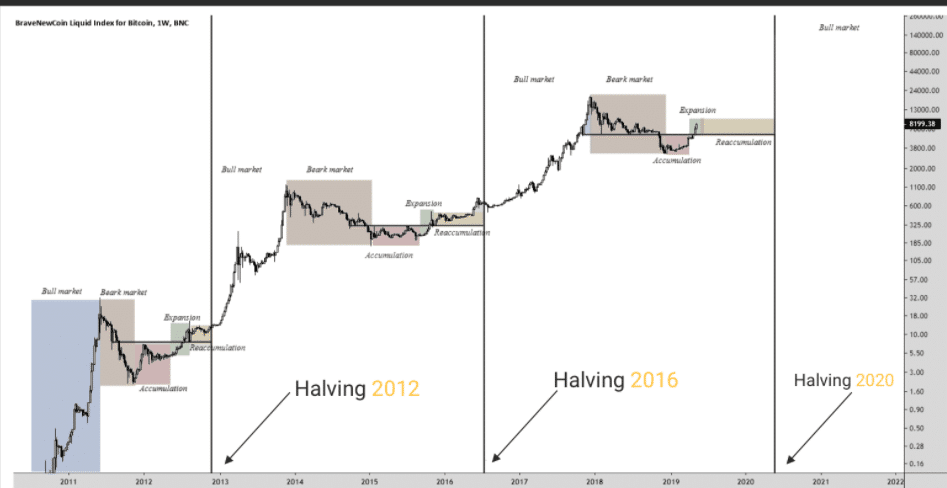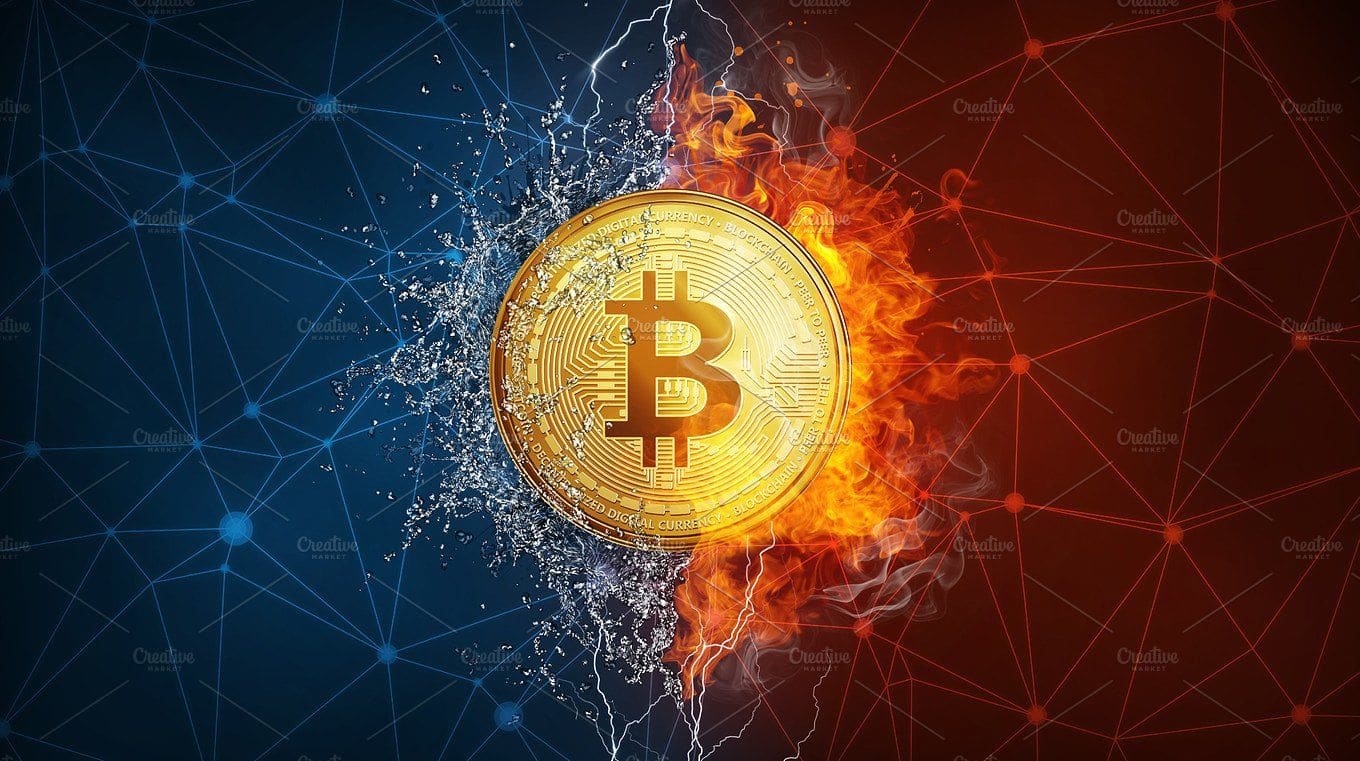Back in January 2009, a digital virtual currency was created named Bitcoin. It is a decentralized virtual payment method that uses peer-to-peer transactions. Since the creation of the crypto leader, it became a popular payment method and made a dramatic price movement with increasing demand. As a result, this is the most valuable digital cryptocurrency of all.
Besides trading on this coin, people can own this coin by mining it. So these coin miners use computers to solve complex math puzzles. Once they solve a mystery, they receive the coins from the network as a reward. The rate of this reward depends on “Bitcoin halving,” which occurs approximately every four years. This term is significantly related to the total number and value of a crypto leader.
Why is everyone talking about halving?
Bitcoin halving is an event where miners’ rewards are halved. It is the most significant event for the initial crypto coin that comes after every four years. There is no definite answer to the above question, but here are the following points:
- Psychological effect. The amount of bitcoin mined is falling, making the asset more “scarce.”
- The price of the main crypto coin is expected to start rising again. And it’s not just that the asset will become more scarce. Statistics show that halving has a positive correlation with the price of the first cryptocurrency, i.e., after the halvings, the crypto leader grew inevitably. However, these statistics’ basics are past events. How it will be this time, no one can answer unequivocally because past events are not heralds of the future.
This article includes all about ‘Bitcoin halving’ or ‘Bitcoin pre-halving,’ what it is, how it affects the paramount crypto coin price, etc.
What is Bitcoin halving?
It is sometimes known as ‘halvening,’ which is an event that cuts the reward in half. Here the halving is a periodic event that comes after mining every 210,000 blocks. After ‘Bitcoin halving’ occurs, the miner receives 50% lesser crypto coins after verifying each transfer.
Let’s begin with the basic concept — BTC is like other cryptocurrencies that run through a system named blockchain. This process needs multiple computers or nodes so that the overall process can run.
In the blockchain process, each of the nodes has a history of transfer of the BTC network. With the increase in transfers, the data with the history increases as well. The transaction data size is not more than 1MB, and it is generated after each transaction. Therefore, it affects the blockchain size by expanding the network.
Now come to verification of the transaction.
In the process of coin mining, participants play the role of virtual bankers. Miners use their computers, particularly CPUs and GPUs, to verify transactions and keep the public ledger updated. They confirm the user’s banking information, ID, and other required data while making a transaction. For this, the miner gets paid. The halving event cuts that payment in half.

The size of the crypto leader blockchain became 308 gigabytes (as of December 2020) from just 4.52GB (back in 2012). The supply of the crypto leader is fixed at 21 million; after reaching that mark, new BTC creation ceases. This crypto coin halving ensures that it decreases the amount of these coins (a reward of miners) with each block that makes the coin scarce, and ultimately, more valuable.
Why is halving important?
It is related to the whole blockchain network and affects the miner payments, lowering the supply, increasing demand, and the price of the leading crypto coin.
As we mentioned above, BTC supply is fixed at 21 million. When it reaches that level, the halving takes place. It takes place every four years, first back in November 2012 after the creation in 2009 and lastly in May of 2020. The mining algorithm is set to find new blocks every 10 minutes.
However, new miners join the network, so the mining power increases, and also time decreases to finding new blocks. The network grew rapidly in the past decade, so finding a new block also fell roughly 9.5 minutes.
BTC halving is a periodic event that happens every four years after reaching the supply at a particular mark of 21 million. However, the halving causes a considerable ripple at the price of a crypto leader. It encourages miners to “provide” more of these coins, although the incentive cuts in half.
The current reward is 6.25 BTC per block (was 12.5 before the last halving occurs), and then the block time was set to 10 minutes. The next halving will be in 2024.
How does BTC pre-halving affect the market?

- The first halving took place back in November 2012, and that sent the favorite crypto coin price to $1500 from $12 within a year.
- The result of the second halving was also remarkable, which took place in July 2016. By that time, the most famous crypto coin price was $650, which reached near $20,000 in the next 17 months of the second halving.
- The third and the last halving occurred in May 2020, which is the latest halving. On that halving date, the price remained near $8,821 and reached a peak near $63,558 by April 2021 (nearly 651% increase in price!).
The halving related theory works something like this:
The reward is halved → half the inflation → lower available supply → higher demand → higher price → miners incentive remains, regardless of smaller rewards, as the value of BTC is increased In the process.

This fig shows the halving impact and future expectations.
Since the creation of BTC, the highest price was in Apr 2021, which was near $63.5K, and then it fell to near $49.5k on May 11, 2021. It was just after making the highest price.
On May 12, 2021, Tesla CEO announced not to accept this coin as a Tesla payment. Later on the same week, Chinese regulators banned crypto payment companies and financial institutions that provide cryptocurrency payment and other services.
These announcements cause a temporary drop at the BTC price below $40k. However, these announcements make a quick price drop. On the other hand, the upcoming potentiality is that the price could reach further upside as the halving effect in the recent future.
Could halving cause the leading coin’s death spiral?
Mining difficulty is recalculated every two weeks — every 2016 blocks. That is why the crypto environment is afraid of situations when a time gap forms between the drop in the hash rate and the next recalculation of the mining difficulty. The network can enter the so-called “death spiral.”
It looks like: the complexity of mining remains high, the profitability of mining decreases — miners turn off their computing power, the hash rate drops, transactions on the network slow down.
However, experts believe that the “spiral of death does not threaten the network.” So since miners initially enter the crypto sphere with a long-term strategy and will continue to work in anticipation of a new recalculation of the mining difficulty restoration of the mining difficulty regular network operation.
Final thoughts
The last of the 21 million BTC is scheduled to be released around the year 2140. At that point, the halving schedule will no longer exist as the supply of BTC will be exhausted. However, it is nearly 100 years from now, so any trader or miner must look closely at the halving impact and follow it to have an opportunity for a good investment as halving causes a tremendous surge in this coin price.
Mining BTC requires high amounts of computational power and electricity, which can be costly as the rewards/incentives of miners. No one knows the future of this coin or other altcoins. Countries like Japan, Australia, China are already weighing regulations over this crypto favorite as they are concerned about taxation and lack of control in the currency.

